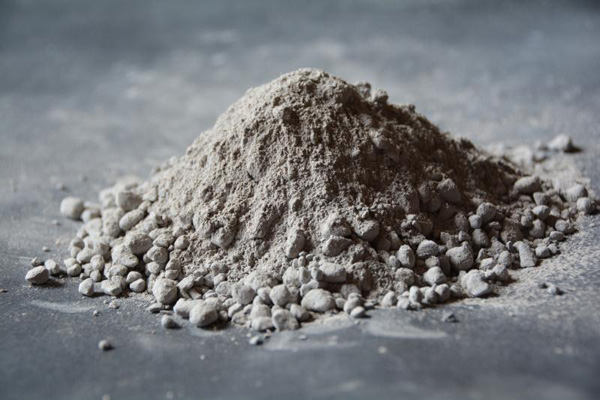- 12
- Apr
What are the construction steps for using castables?
What are the construction steps for using castables?
There are many factors that affect the performance of castables, such as material selection, construction, and maintenance. The importance of construction also plays a vital role in the performance of castables. The following editor will explain to you the commonly used construction methods of castables:

A. Pouring construction method
1. Inspection: Check whether the mold is well supported, there are no gaps and deviations, and the debris in the mold is cleaned, whether the anchors (heat-resistant stainless steel palladium nails) are welded firmly, and the surface of the anchors is coated with paint or plastic bag to buffer Expansion force after heating.
2. Pouring: Pour the mixed pouring material into the mold, insert the vibrating rod to vibrate, and move the vibrating rod at a uniform speed, and pull out slowly.
3. The pouring area is too large, it can be poured in layers and parts, and can be cross-operated. The wall is poured in layers, each time is about 900mm, the top of the furnace is split and poured, and then hoisted.
4. Curing and demoulding: the environment temperature>20℃, the mould can be dismantled after 4H, <20℃, the mould can be dismantled after curing for 6-7H, if the local edges and corners are damaged, it can be repaired. (The specific demolding time depends on the site conditions).
B. Smearing construction method
1. First check whether the anchors (heat-resistant stainless steel palladium nails) are welded firmly. Paint the anchors or wrap them in plastic bags to buffer the expansion force after heating.
2. Use manual smearing of the mixed castable directly on the working surface.
3. The working surface shall be applied continuously in layers from bottom to top. The height of each layer is about 900mm, and the thickness of each layer is about 80mm. When the thickness reaches the required size, use a tool to polish the construction surface.
4. Apply continuously on the top of the construction area in sections, with a section between the two expansion joints, each time 30-50mm, when the thickness reaches the required size, use a tool to polish the construction surface.
5. For the thermal insulation lining of large-diameter horizontal pipelines, the method of constructing the lining in sections first and then erecting the connection should be adopted. When the pipeline is constructed in sections, place the pipeline horizontally, apply the lower semicircular lining first, and after natural curing for 4-8h, turn the pipeline 180° and apply the other semicircular lining, and do the joint treatment after the pipe is connected.
C. Spray construction method
1. Weld metal palladium nails or metal mesh (heat-resistant stainless steel) on the furnace shell first.
2. Put the spray paint into the sprayer, use compressed air (pressure 0.10-0.15MPa) to send the mixture to the nozzle, and add an appropriate amount of water or chemical bonding agent to mix with the material, and spray it to the construction surface.
3. The nozzle outlet should be perpendicular to the construction surface, the distance is 1-1.5m, spraying should be continuous, and the thickness of each spraying should be less than 200mm.
4. If the spraying layer of the construction surface is too thick, it should be sprayed in layers, but it must be carried out after the previous layer has sufficient strength. After spraying, the working surface should be smoothed and the rebound material should be cleaned up.
To sum up, strictly following the construction methods and steps plays an important role in the performance of refractory castables.
